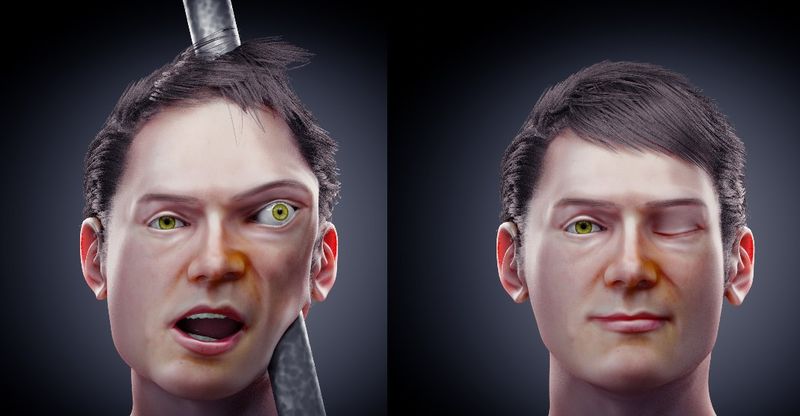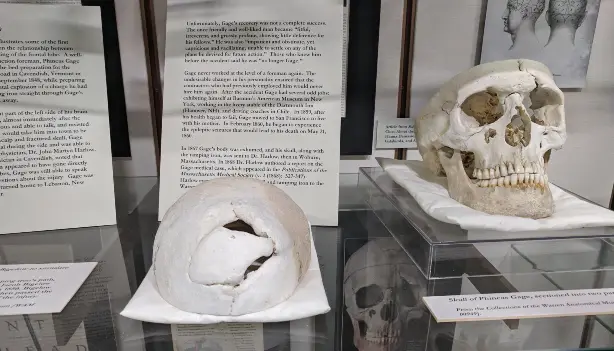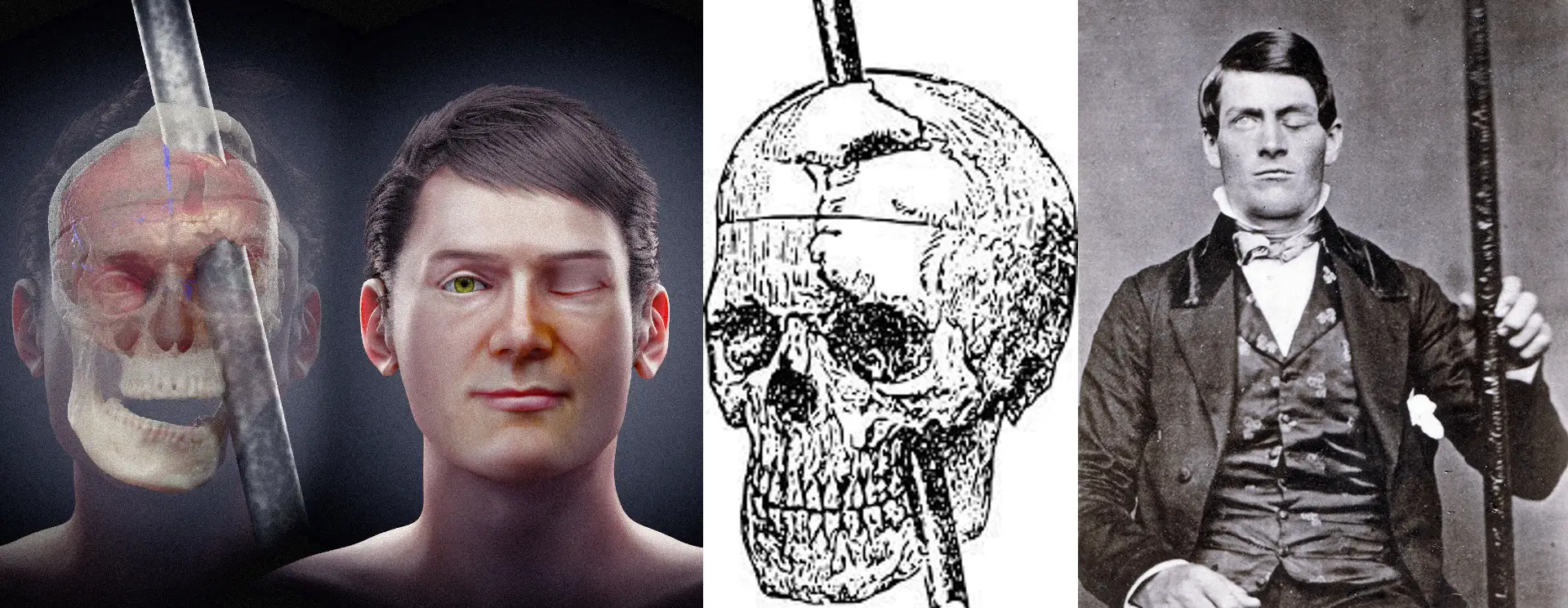Estimated reading time: 3 minutes
Phineas Gage’s life took a dramatic turn on September 13, 1848. The Phineas Gage Iron Rod Accident happened on the Rutland and Burlington Railroad in Vermont. While tamping explosives into a hole, a spark ignited, causing an iron rod to blast through his left cheek. It then passes behind his left eye, and exited through the top of his head. This astonishing Accident left Gage conscious and remarkably alert immediately afterward, despite the severe damage to his brain.
Dr. John Martyn Harlow, the physician who treated him, was astonished by Gage’s survival. Although the Accident was catastrophic, Gage’s ability to speak and move moments after the incident was a medical marvel of the time. Despite this initial recovery, the long-term consequences soon became evident.
Phineas Gage Iron Rod Accident Changed His Demeanour

The rod had passed through Gage’s left frontal lobe, a region crucial for regulating behaviour and personality. In the days and weeks following the Phineas Gage Iron Rod Accident, those who knew Gage well noticed profound changes in his character. Once known for his responsible and amiable demeanour, he became impulsive, irritable, and prone to erratic behaviour. This transformation marked a significant shift, not just in Gage’s personal life, but also in the understanding of how localized brain injuries could affect personality and behaviour.
Gage’s case became seminal in the history of neuroscience, prompting extensive study and discussion about the brain’s intricate functions. It challenged existing medical knowledge and set the stage for deeper exploration into the relationship between brain anatomy and psychological traits.
Phineas Gage’s case provided crucial evidence that different brain regions control specific functions like personality, decision-making, and behaviour. His accident highlighted how the frontal lobes regulate emotions, impulses, and social behaviour. Before the injury, Gage was responsible and amiable, but afterward, he became impulsive and disrespectful. The Phineas Gage Iron Rod Accident change underscored the frontal lobes’ importance in social norms and decision-making. The case also demonstrated brain plasticity, revealing how the brain adapts even after severe damage. Gage’s experience played a pivotal role in linking brain injury to personality changes, helping to establish cognitive neuroscience
Phineas Gage’s Skull Preserved at Harvard Medical School
Gage’s skull, preserved at the Warren Anatomical Museum at Harvard Medical School in Boston, Massachusetts, vividly displays the entry and exit points of the iron rod from the Phineas Gage Iron Rod Accident in 1848. This museum, renowned for its collection of medical artifacts, includes the skull, which serves as preserved evidence of one of the most famous cases in neuroscience history.

The Warren Anatomical Museum preserves Gage’s skull, providing a tangible link to the Phineas Gage Iron Rod Accident. Researchers and visitors can examine the physical effects of his extraordinary survival first hand.
